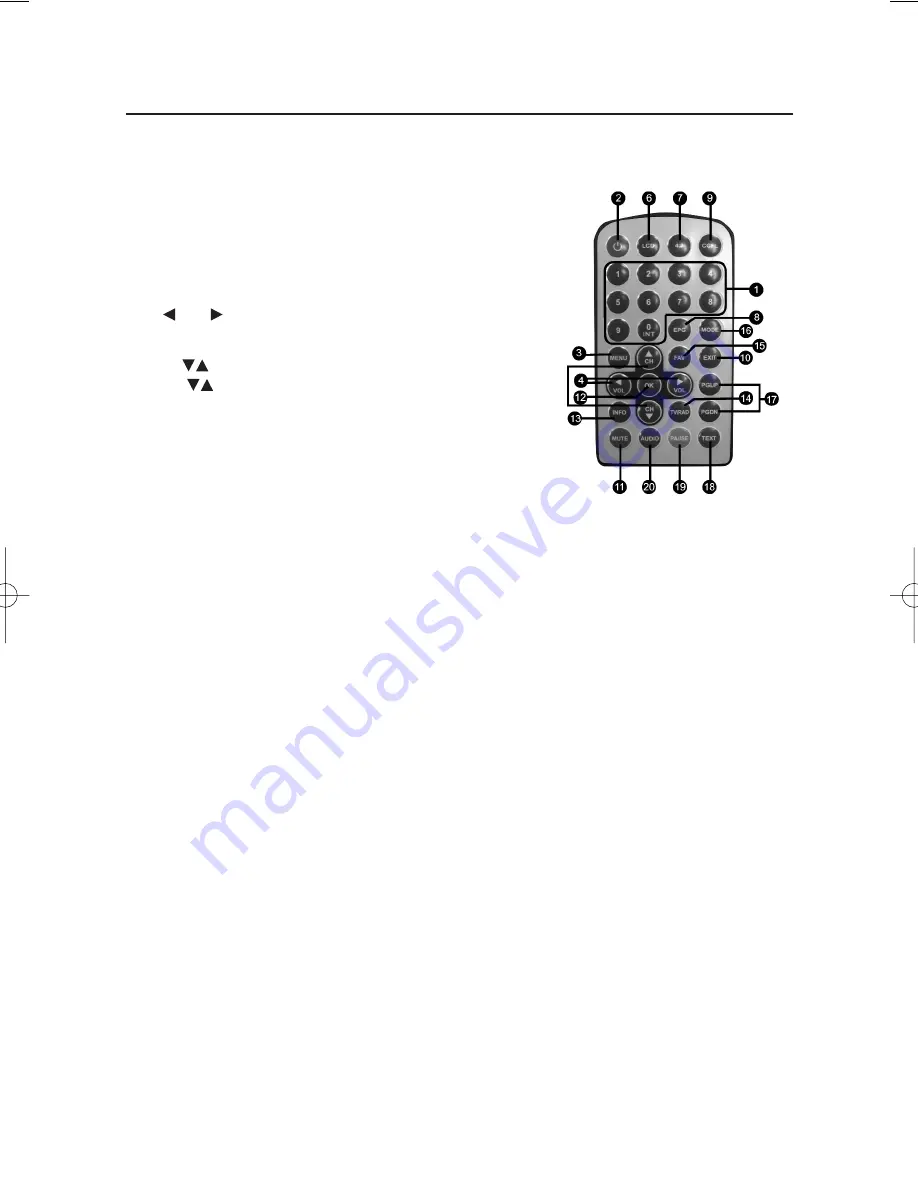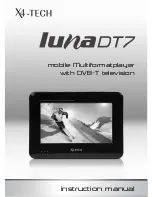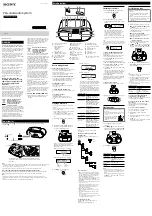
2 D E S C R I P T I O N O F R E M OT E C O N T R O L
11
1. Digital keys. Under normal usage, these are for typing in the number of the desi-
red channel. In programme mode, they are for entering digital values.
2. Stand-by key: For placing the device on permanent stand-by.
3. MENU key: For entering the main menu or returning to the preceding menu
when you are in a sub-menu.
4. VOL /VOL volume keys: For increasing or decreasing the sound volume. In
the menu, these modify the different parameters.
5. CH keys (up and down keys) - for changing channel. In radio mode, use
the CH keys to access the various radio programmes.
6. LCD key: For accessing the control menu of the LCD screen.
7. 4:3 key: For toggling from 16:9 mode to 4:3 mode, and vice versa.
8. EPG key (electronic programme guide). This key is used to access the various
programme guides (if broadcast by the operator).
9. CCFL key: For adjusting the screen brightness. Pressing successively scrolls
through the different modes. (CCFL : H , CCFL : M, CCFL : L, CCFL : black screen). In the darkest mode, the screen is almost black to
increase battery life, but sound is maintained. The infrared receiver light changes to red in this mode. Pressing again on CCFL returns to
high mode.
10. EXIT key: For exiting from menus and returning to display mode.
11. MUTE key: For muting sound.
12. OK key: For confirming a selection.
13. INFO key: Displays the technical parameters of the current channel.
14. TV/RAD key for toggling between TV mode and radio mode.
15. FAV key for accessing the list of favourite channels.
16. MOD key: For toggling between normal mode (DVB-T) and AV mode. In AV mode, the screen acts as a monitor for an external
source (games console, multimedia playback device, etc.).
17. PGUP / PGDN key: For rapid accessing of preceding/following pages in long lists.
18. TEXT key: For accessing the teletext magazine or the teletext subtitling (if broadcast by the operator).
19. Key not used on this model.
20. AUDIO key: For accessing alternative audio stations.
Plawa_06_004_Bedinungsanleitung_4_engl2 10.05.2006 10:09 Uhr Seite 11








































